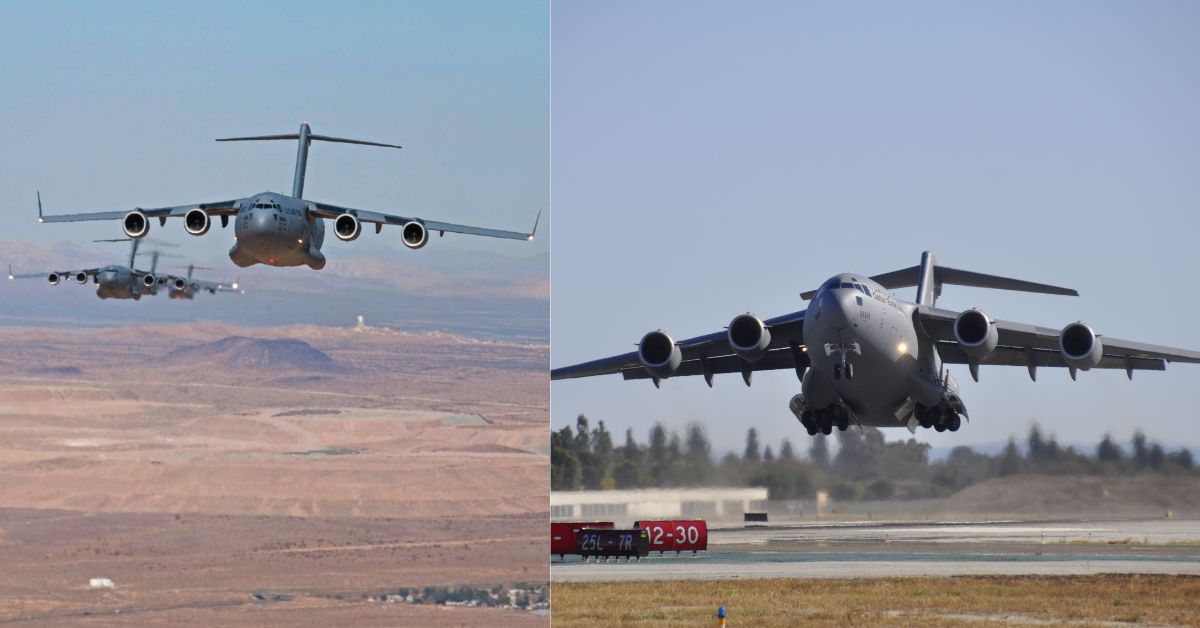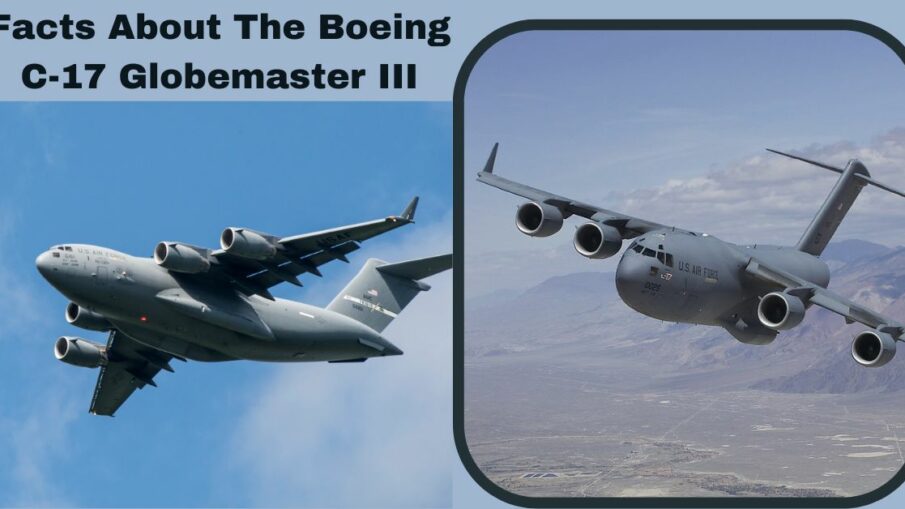The first flight of Boeing’s C-17 Globemaster III took place on September 15th, 1991. The first production model arrived at Charleston Air Force Base, now known as Joint Base Charleston, just under two years later. The US military’s budget finally allowed for considerably over 200 Boeing C-17 models, despite its initial interest in 120 of them.
Many allies also make use of the type, including the UK, Canada, Australia, and numerous more. A crucial airlift must be available, prepared to deploy, and able to support an efficient force. The trustworthy C-17 can handle military, peacekeeping, and humanitarian missions anywhere in the world in order to serve more contemporary government objectives and resolve international crises.
1. One Size Fits All
The remarkable airlifter from Boeing can carry almost any item or piece of equipment the US Army could need. The Globemaster III can lift even the most difficult military equipment with its maximum payload capacity of 170,900 pounds (77,519 kilograms) and maximum gross takeoff weight of 585,000 pounds (265,352 kilograms).

For instance, Boeing bragged that the C-17 could transport an M1 Abrams, the main tank of the US Army, whose most advanced specifications can weigh around 70 tons. Undoubtedly spectacular, however, the weight of the tank is the only reason it can support one.
Otherwise, there would be plenty of room for more. Notably, the Globemaster III, one of the quickest platforms ever to achieve so, completed its 4 millionth flight hour in January 2021, demonstrating the usefulness of the system.
2. Built for the Long Haul
Boeing made the most of commercial hardware, including avionics that met Air Force standards, when creating the C-17. Only a pilot, co-pilot, and loadmaster are required to operate the airlift, which results in extremely minimal manpower requirements, risk exposure, and operational expenses.
Additionally, Boeing offers a number of warranties to military users to ensure dependability and cost efficiency. The Globemaster III has been impacted by requirements for reliability and maintainability. Boeing’s aircraft boasts a 92% chance of mission completion success, according to the US Air Force.
Furthermore, the highly complicated aircraft only needs 20 man-hours of maintenance on average per hour it is in the air. To top it all off, the availability rates for full and half missions are 74.7% and 82.5%, respectively.
For access to additional factual information, please refer to the provided post below:
- The Mysteries of Space: 10 Fascinating Space-related Facts
- Discovering Nicaragua: 10 Intriguing Facts About This Central American Gem
3. A Powerful Performer
Four Pratt & Whitney F117-PW-100 engines provide all of the propulsion for the Boeing C-17 Globemaster III. The PW2000, which powers every version of the American aircraft manufacturer’s twin-engine 757 series of aircraft, including the C-32 government VIP transporter, is really known as the P&W F117 in the military.
Each engine has a thrust reverser and is capable of 40,440 lb of thrust. The reversers on the C-17 reroute the airflow upward and forward, lowering the likelihood of damage and preventing dust and debris intake. The Globemaster III can achieve many of its distinctive operational characteristics thanks to this group of four engines.
4. Going the Distance
The C-17 Globemaster III can fly 2,400 nautical miles without refueling when loaded with a cargo of 164,900 pounds (74,800 kilograms), according to Boeing. With its outstanding airlift’s cruise speed of over 450 knots (.74 Mach), it may be used for a wide range of tasks.
According to the US Air Force’s 445th Airlift Wing, the Boeing C-17 can drop 102 fully outfitted paratroopers, including 54 along the sidewall and 48 down the centerline. Typically, the aircraft can drop a single payload weighing up to 60,000 lb (27,220 kg) or several payloads weighing up to 110,000 lb (49,900 kg).
The Globemaster III has a sizable rear door that can be used to carry freight. This door can accommodate palletized cargo as well as, as was already indicated, huge trucks and paratroopers.
5. Wherever You Want to Go
Armed forces might need to act at any moment or anywhere. The army must be able to transport essential supplies or personnel to remote regions of the world for these missions. Fortunately, despite its size, the C-17 can fit on most airfields.
The Boeing Globemaster III’s design makes it easier to operate on sparse, small airfields and landing strips. The American aircraft manufacturer claims that the C-17 is completely capable of landing on runways as short as 3,000 feet (914.4 meters) and taking off from ones as long as 7,000 feet (2133.6 meters).
A plus is that the C-17 Globemaster III can turn around using a three-point turn and engine thrust reverser, even when operating on a landing strip that is only 90 feet (27.4 meters) wide.
I hope that you find it to your liking. Please continue to follow Thegeofacts.com for further developments.


Leave a Reply